Best Survival Stove for Cooking and Boiling
When venturing into the great outdoors, having the best survival stove can make all the difference when it comes to cooking and boiling water. Whether you’re on a thrilling camping trip or facing survival situations, a reliable and efficient stove becomes an essential tool for preparing meals and ensuring hydration.
There are plenty of brands of survival stoves to pick from. This is where we come in. We’ve researched the best survival stove, put them to the test, and now the results are in: the overall best, an ultralight option, and a wood-burning option. If you need to cook some food or boil some water, one of our picks will bring the heat.
Contents (Jump to a Section)
The Best Survival Stove
Gas One GS-3400P
Dual Fuel, Easy to Use, and Compact
A versatile fueled camp stove for any emergency, disaster, or survival situation.
*Price at time of publishing; check for price changes or sales.
Portable gas stoves are ideal for most survival situations. Yes, they do rely on fuel but they can quickly and reliably cook and boil. This model from Gas One is one of the least expensive dual-fuel models you can get, increasing the versatility.
For being stamped steel, it’s also surprisingly durable. There is not much to go wrong with the simple construction, and the carrying case gives it a bit of padding too.
Here is how the GS-3400P measures up:
- 8,000 BTU max
- Butane or Propane compatible
- Steel construction
- Carrying case
- 14″ W x 11″ L x 4.5″ H
- 3.1 pounds (without fuel)
With good fuel versatility and reliable efficiency at an affordable price- it’s easy to see why the Gas One GS-3400P Stove is the best for survival.
Ultralight Stove
MSR PocketRocket 2
Efficient, Lightweight, and Effective
The original PocketRocket got some upgrades and continues to be the best option for ultralight camp stoves.
*Price at time of publishing; check for price changes or sales.
The PocketRocket has been around for a while and is well-known by backpackers and campers. It boils water in 3 1/2 minutes, so it gets hot quickly. This allows you to heat and eat, pack it back up into its incredibly small shell, and get going again.
Here is how PocketRocket 2 measures up:
- 8,200 BTU max
- Isobutane fuel
- Aluminum construction
- Carrying case
- 2″ W x 2″ L x 3″ H
- 2.6 ounces (without fuel)
If you are looking for an ultralight and reliable camp stove, the MSR PocketRocket 2 is what you need.
Wood-Burning Stove
Gas One Woodfire
Versatile, Wood-Powered, and Collapsible
Start a fire anywhere with sticks, twigs, or fuel cubes using a compact wood-burning stove.
*Price at time of publishing; check for price changes or sales.
Sometimes you need to just go with what works. The hinged collapsible wood stoves have extra points of failure that the cylindrical ones don’t. Gas One is trying to corner the camp stove market, apparently, because they offer theirs for a screaming deal.
Burn wood pellets, twigs, sticks, and other natural materials to heat up the sides of the stove. Once they get warm they start inducing air through the bottom ventilation holes further fueling the fire.
All of the parts of the stove collapse down to less than 3″ tall, letting it stow away in pretty much any kit.
Here are the full specs:
- Natural kindling fuel
- Stainless steel construction
- 5.3″ D x 2.9″ H
- 9.4 ounces
If you are looking for a wood-burning survival stove, get a Gas One Woodfire Camp Stove.
Everything We Recommend
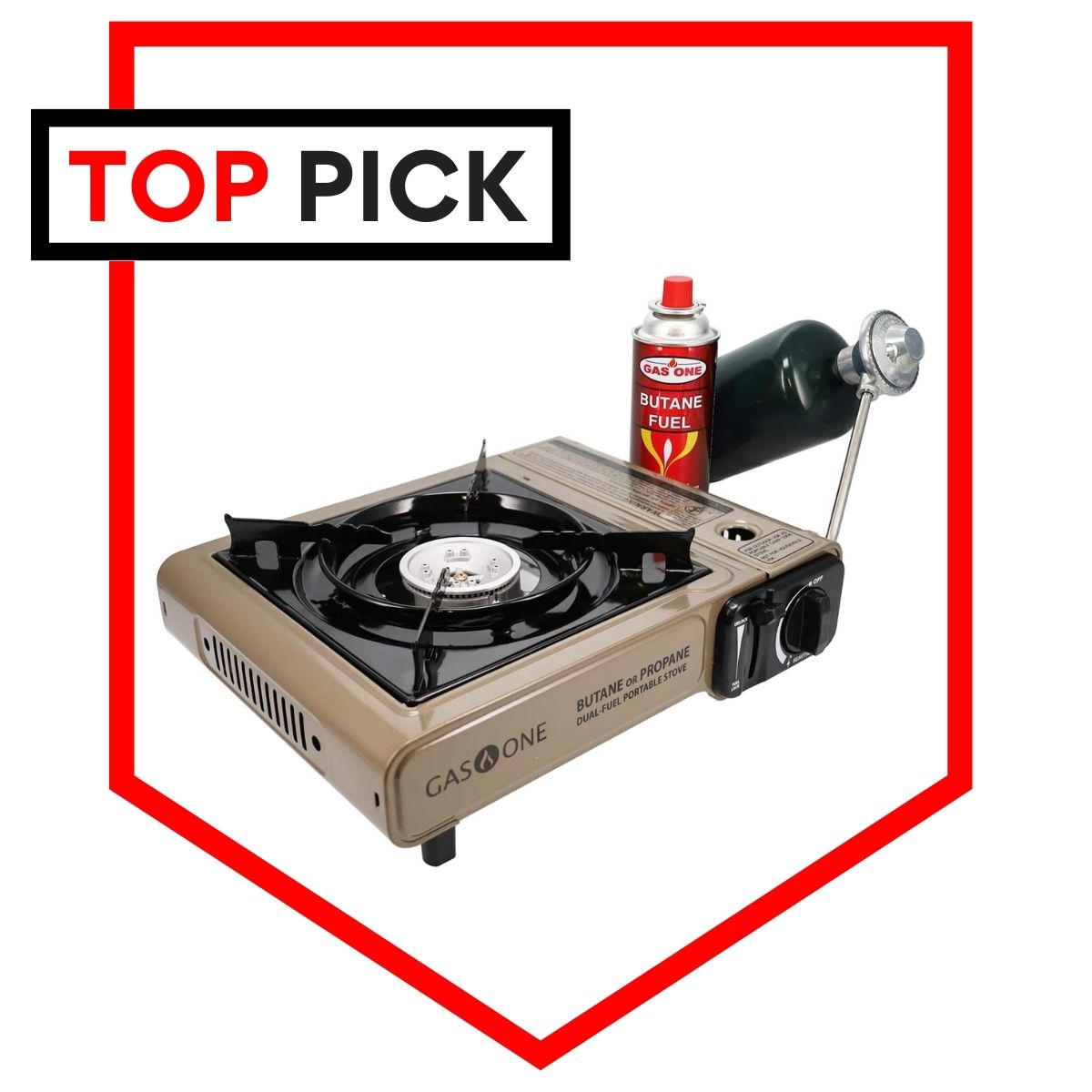
A versatile fueled camp stove for any emergency, disaster, or survival situation.
Where to Buy
*at time of reviewing
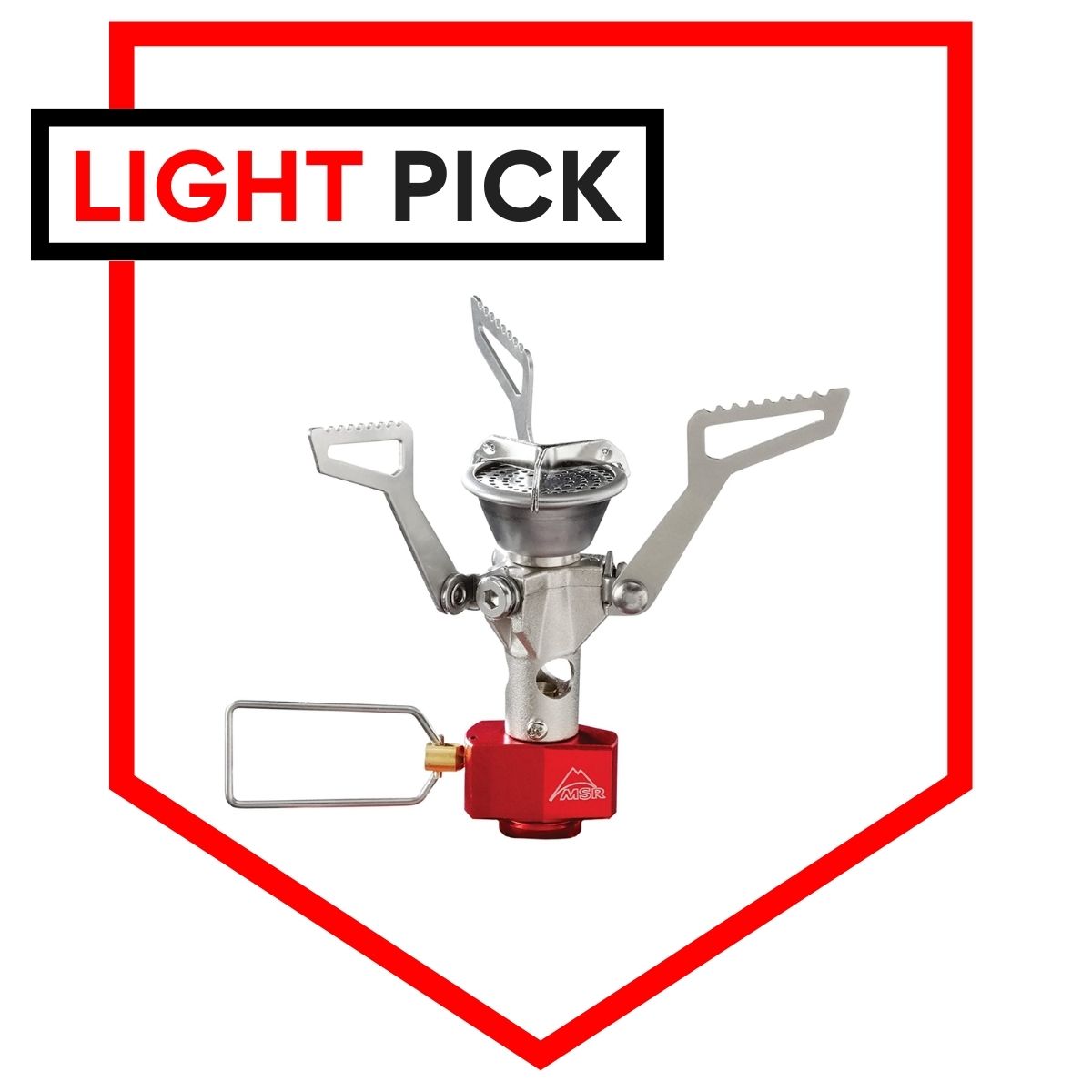
The original PocketRocket got some upgrades and continues to be the best option for ultralight camp stoves.
Where to Buy
*at time of reviewing
The Stoves We Compared
Our research narrowed the field down to several brands and types of stoves that we compared: MSR, Coleman, Fire-Maple, Jetboil, Solo Stove, Canway, Grill Boss, Toaks, Esbit, and more.
You can see our full list of review criteria below in the What to Look For section, with an explanation for each.
We considered a huge range of stoves using a wide range of fuel types. We did not consider electric stoves or large installed stoves or grills (regardless of fuel source). Those can come in handy for survival, but we focused on portable solutions.
We’re always looking for new and better gear, so if you have a survival stove that you swear by, let us know in the comments. We review most of our tested gear annually so we can try to get it in the next roundup round and see if it will beat out our top picks.
What to Look For
The best survival stoves have several important features to look for:
- Value
- Fuel Type
- Versatility
- Size & Weight
- Durability
When you get the right blend of these, you can find a camp stove that you can rely on in survival situations. Below, we break down what each of these features means for the survival stoves that truly set themselves apart.
Value: Cost vs. Benefit
The amount of money you spend on something like a portable cooking tool shouldn’t blow out your entire budget. There is a wide range of price points when it comes to camp stoves mostly related to their size/weight and fuel type.
You never want to spend too much money on one thing when it comes to gear for your kits. It’s better to diversify your gear and budget to make sure you are covered for a wide range of scenarios.
Fuel Type
There are many ways to power a survival stove, and we tested most varieties including:
- Twigs, Sticks, and Logs – Wood-burning stoves are the tried-and-true survival stove and don’t require lugging fuel around. The downside (of course) is that you have to gather dry fuel.
- Propane – Widely available and used for camp stoves and grills, propane is a reliable choice.
- Butane – Mostly used for lighters, butane is a great lightweight alternate fuel choice.
- Isobutane – With more energy packed inside at a lighter weight, Isobutane is the fuel of choice for lightweight backpackers.
- White Gas – More rare these days, the original Coleman camp fuel is an LP mixture of liquid fuel.
- Solid Fuel Tablets – Usually Hexamine, Trioxane, or Sterno- these prepackaged fuel cubes make cooking convenient and compact.
- Solar – A great renewable way to cook, the downside is pretty large if the sun isn’t out.
- Electric – Viable with power supplies or generators in an emergency, but not practical for widespread use.
Each fuel type has strengths and weaknesses, which is why we highlighted the best of the main fuel types: wood-burning, dual-fuel canister, and isobutane.
Versatility
Versatility in a stove is a measure of how useful it is in a wide range of scenarios. You’ll mainly want to be able to cook food and boil water, so it needs to put out enough heat even if it’s in cold, wet, or windy conditions. There are many variables that go into meeting this goal, from capacity to BTU output, cook time to ease of use.
Size & Weight
When you are using a survival stove, you are typically on the move. Whether you’re setting it up for an emergency or using it straight out of your bug out bag in a survival situation- it needs to be portable and compact.
You’ll need to factor in the fuel used for the stove in its size and weight. Isobutane is the most efficient fuel as far as size and weight go if you are excluding solar and natural kindling.
Durability
If you pull out your survival stove just to find it broken, it’s not going to help much. A few of the collapsible stamped stoves we tested didn’t fare so well durability-wise. You especially want your fuel stoves to be durable since you don’t want to mess with a fuel leak.
How to Use a Survival Stove
Be sure to use common sense and stay safety-minded when using a survival stove. You can catch things on fire, melt your gear, or even start wildfires if you don’t use it properly. Here are the general steps to using a survival stove:
- Fuel: Determine the type of fuel your survival stove requires, such as wood, solid fuel tablets, alcohol, or gas canisters. Ensure you have an adequate supply of the chosen fuel.
- Assembly: Follow the manufacturer’s instructions to assemble the stove properly. Ensure all parts fit securely and that the stove is stable on a flat, non-flammable surface.
- Ventilation: Set up the stove in a well-ventilated area to prevent the buildup of harmful gases. If indoors, ensure there is sufficient airflow and consider using a carbon monoxide detector.
- Ignition: Use the appropriate method to ignite the stove based on the fuel type. This may include using a lighter, matches, a flint and steel, or an integrated ignition system if available.
- Flame Control: Learn how to adjust the flame intensity on your stove. Some stoves have adjustable valves or dampers that control airflow and flame size. Experiment to find the optimal setting for your needs.
- Cookware Placement: Place your cooking pot or pan on the stove’s designated cooking surface. Ensure it is stable and secure to avoid accidents. Use a pot gripper or tongs to handle hot cookware.
- Cooking Time and Monitoring: Be aware of the cooking time required for your specific meal or beverage. Keep a close eye on the stove while cooking to prevent burning or overcooking.
- Extinguishing the Stove: When you’re finished cooking, turn off the fuel supply or close the valve/damper to extinguish the flame. Allow the stove to cool down before handling or storing it.
- Cleaning and Maintenance: Regularly clean the stove to remove any residue or buildup that may affect performance. Follow the manufacturer’s instructions for proper maintenance and storage of your specific stove.
Luke does a pretty good job of showing how to use a PocketRocket with applicable advice for any survival stove:
Who Needs a Survival Stove?
Cooking is an important part of preparedness, but a survival stove is not something we consider essential. You can get by with a stand-alone campfire in many cases, but a survival stove makes everything much easier and more reliable.
For that reason, we suggest you add a survival stove to these kits:
Survival stoves are also great for camping, hiking, and backpacking as well. At the very least, they can also assist with power outages (a common disaster type) if you typically rely on an electric range for cooking.
How We Review Products: We research thoroughly before selecting the best products to review. We have vast prepping and survival experience and bring in outside experts when needed. Hours on end are spent testing gear in stressful conditions and using specialized testing gear to verify claims. We assign performance criteria and impartially rate each tested item. Learn more about how we test.
Sources and References
All of our experience and the testing we do to determine the best survival stove are useless without listing our research sources and references. We leaned on these for the book knowledge that we paired with our hands-on testing and practical survival experience:
Hosgood, H., et al. (2008). Portable stove use is associated with lower lung cancer mortality risk in lifetime smoky coal users. British Journal of Cancer. Issue 99. Pages 1934–1939. (Source)
Thomassen, O., et al. (2004). Carbon monoxide poisoning while using a small cooking stove in a tent. The American Journal of Emergency Medicine. Volume 22. Issue 3. Pages 204-206. (Source)
Valmiki, M., et al. (2011). A novel application of a Fresnel lens for a solar stove and solar heating. Renewable Energy. Volume 36. Issue 5. Pages 1614-1620. (Source)
The Final Word
Cooking and purifying water are a few of the most important survival tasks you’ll need to be able to do. A survival stove will help you do both. Getting one that you can rely on will make surviving any situation that much easier.
Here are a few other guides and reviews our subscribers have found helpful:
- Best Survival Lighter for Practical Preppers
- Best Survival Water Bottle for EDC and BOBs
- Bug Out Bag List | 44 Essentials
We presented quite a lot of information, but as always: if you have any questions let us know and we would be happy to help. Our research and testing found the Gas One GS-3400P Stove to be the best option given its value, fuel type, versatility, size/weight, and durability.
Keep exploring, stay prepared, and be safe.
You’ve Been Missing Out
Join the 2+ million preppers that rely on our prepping advice by subscribing to TruePrepper.- Practical guides and tips
- Useful survival giveaways
- Free, forever
- < 0.4% of people unsubscribe
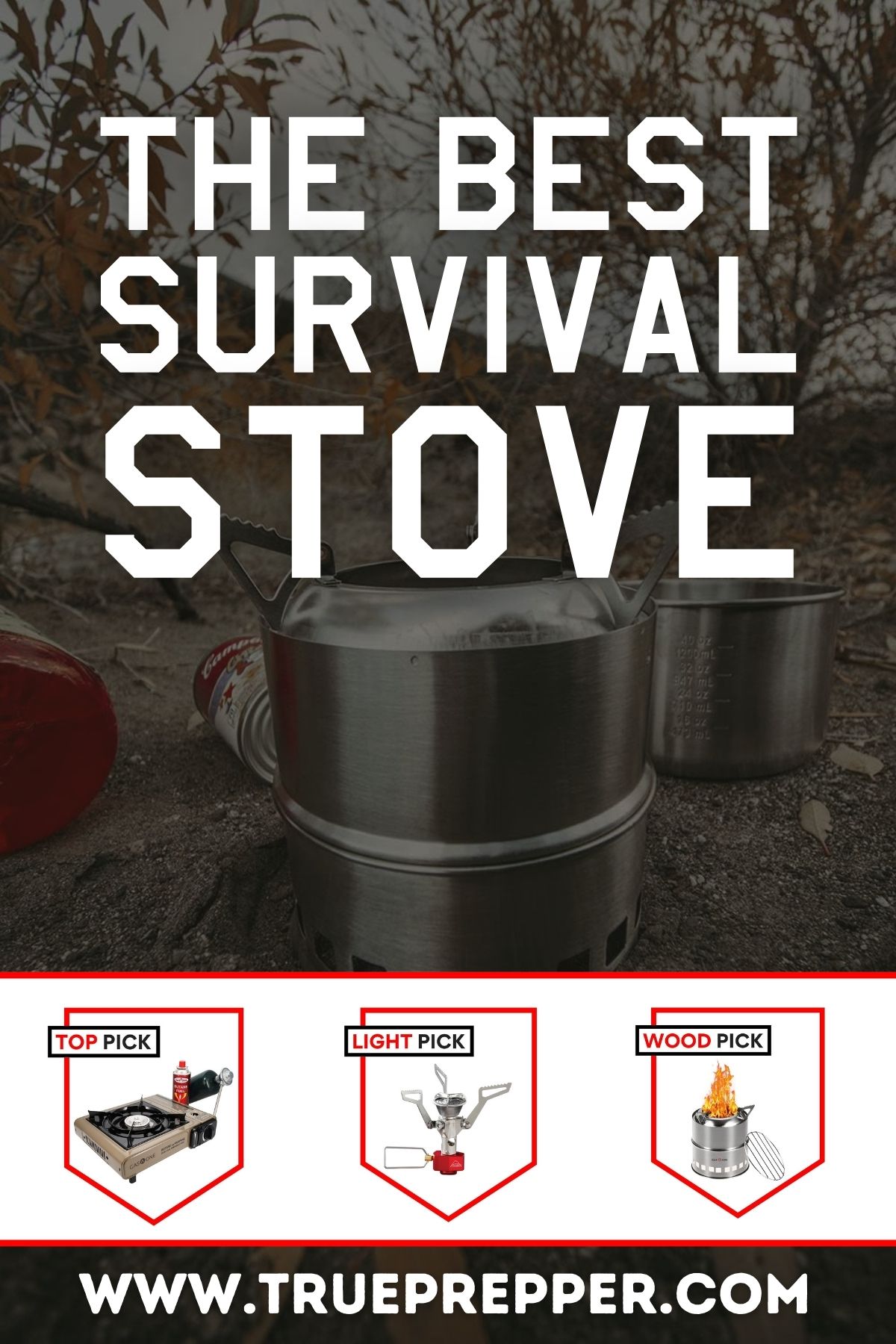

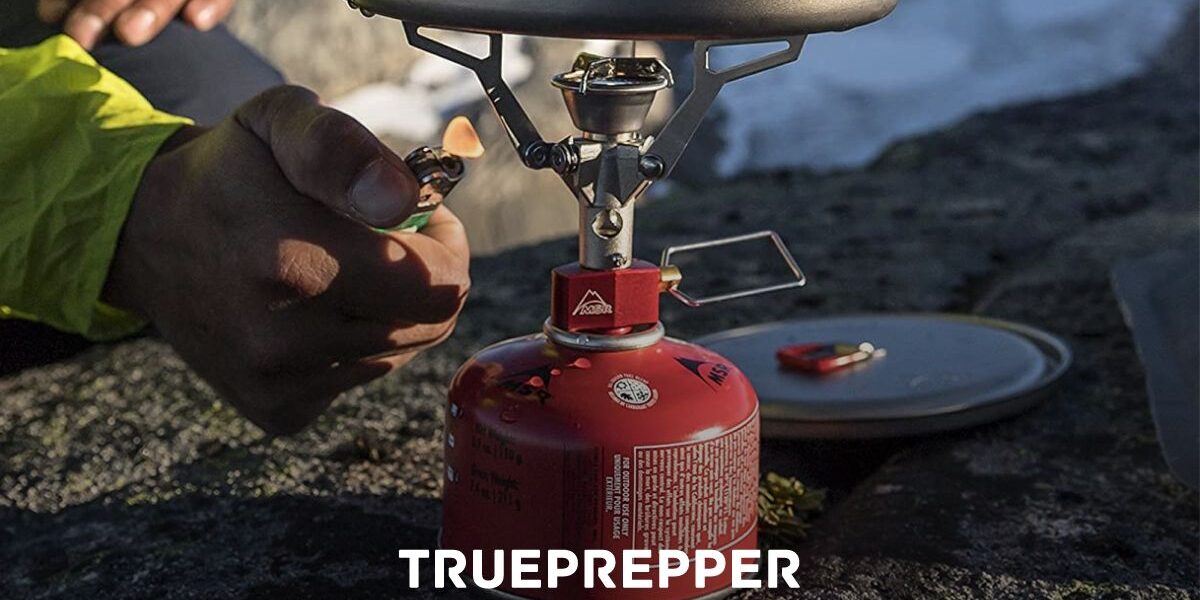
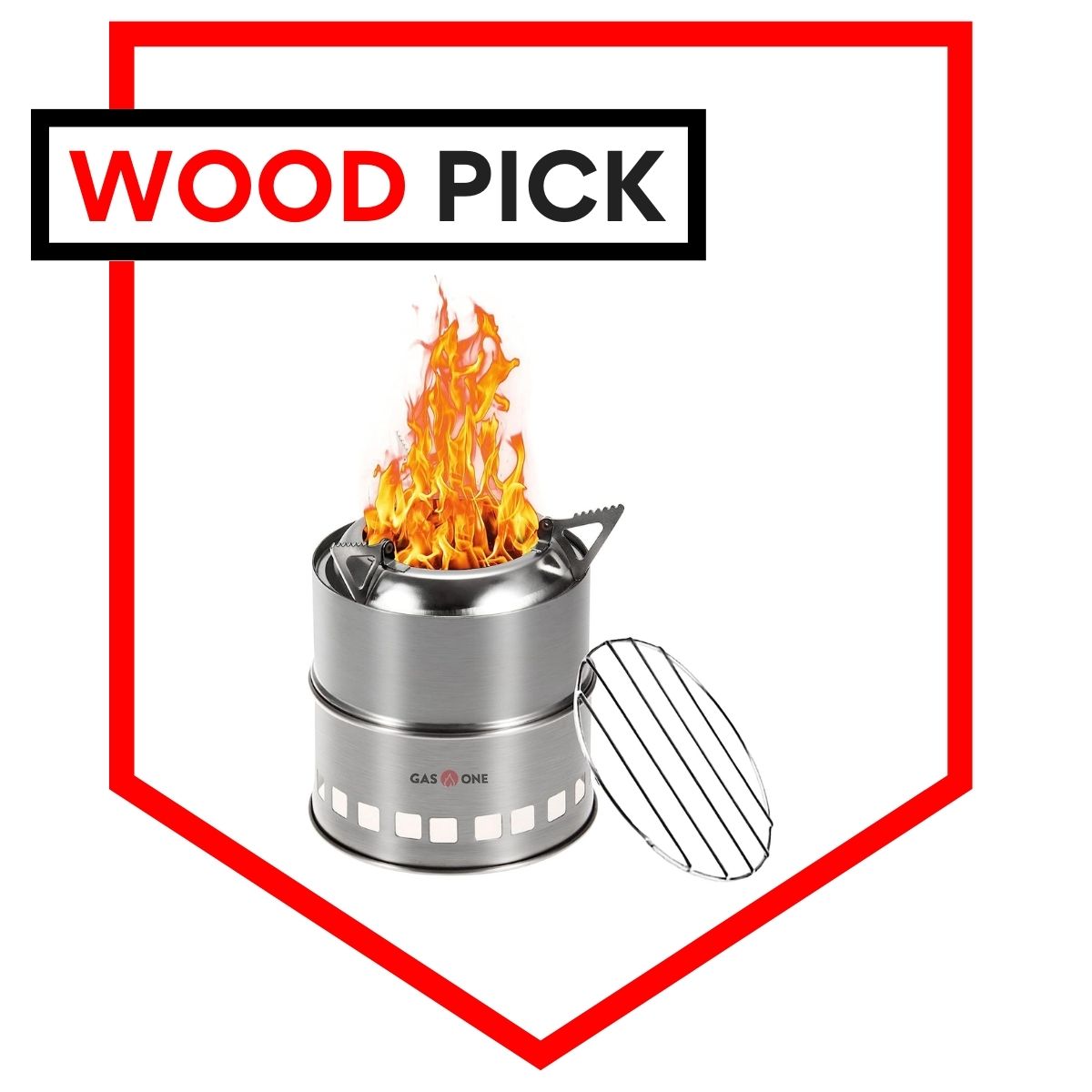
The emergency/survival stove at our house is our old faithful Coleman 2-burner propane stove
It has two high-output individually adjustable burners and connects easily to 1lb propane bottles OR
A 20lb gas grill bottle
Yeah, the Colemans are great but have you seen their new price tag recently? Finding a used one is always a good pickup though!